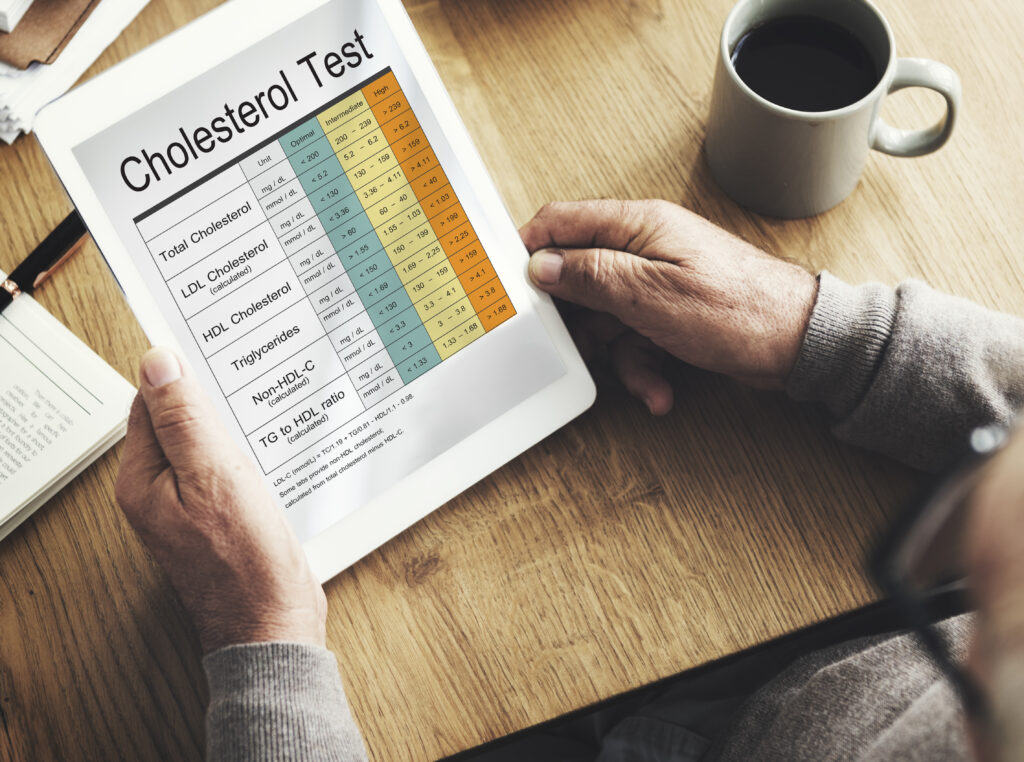- Home
- Health Center
- Health Info
- 4 Natural Ingredients to Take Down Cholesterol
Cholesterol
4 Natural Ingredients to Take Down Cholesterol


High cholesterol is associated with a higher risk of cardiovascular diseases such as heart attack and stroke. Yet many might be hesitant to take cholesterol medications.
High cholesterol levels warrant the use of cholesterol medications (such as statins and fibrates). However, the following natural ingredients may be considered for borderline high cholesterol levels.
Red Yeast Rice
Produced by fermenting yeast. A naturally-occuring statin.1
How does it work?
This fermentation produces monacolins, a substance that has been recognized for its lipid-lowering qualities. Monacolin K, this particular isolated subtype found to be structurally identical to lovastatin, which is a cholesterol-lowering medicine.
Effect on lipid profile
1. LDL-Cholesterol
Recent studies with doses varying between 1200mg to 4800mg/day which contain 4.8mg to 24mg of monacolin K reduced Low-density Lipoprotein Cholesterol (LDL-C) by an average of 1.02 mmol/L after 2 to 24 months of treatment compared to placebo.
2. HDL-C & Triglycerides (TG)
The effect of red yeast rice in increasing High-density Lipoprotein-Cholesterol (HDL-C) and decreasing Triglycerides (TG) are insignificant as compared to placebo.
Dosage
1200-2400mg daily.
The Concern?
Studies show chronic use of monacolins could cause mild to moderately severe side effects, such as muscle pain. But they are usually safe and well tolerated.
Probiotic (Specific Strains of L.Plantarum)
The combination of 3 clinically proven probiotic strains:2
- Lactobacillus plantarum (CECT 7527)
- Lactobacillus plantarum (CECT 7528)
- Lactobacillus plantarum (CECT 7529)
How does it work?
1. Reducing the reabsorption of intestinal cholesterol.
This combination of good bacteria is able to break down cholesterol (bile salts) and reduce the reabsorption of bile salts back to the liver.
2. Increasing the consumption of cholesterol by the liver.
Once broken down, less bile salts are available for reabsorption which are then removed through the feces. To replace the lost bile salts, the liver consumes cholesterol from the blood to make new bile salts.
Effect on lipid profile 3
This combination of good bacteria shows significant reduction in plasma total cholesterol and LDL-C after 12 weeks of consumption as compared with the placebo,
↓ TC by 13.6%
↓ LDL-C by 14.6%
Dosage
One capsule daily.
Soy Lecithin
Soy lecithin is a mixture of phospholipids and oils derived from soybean oil, phosphatidylcholine, phospholipids and glycolipids. 4
How does it work?
Lecithin can avoid absorption of fats by emulsifying it.
The possible mechanism of soy protein to reduce lipid levels is by decreasing the cholesterol intestinal absorption and increasing bile acid excretion. (Function of this bile acid is to facilitate the absorption of fats in our small intestine)
Effect on lipid profile
It reduces mainly TC and LDL-C but this reduction shown by study are in line with studies as soy protein as a whole. There is no work in literature on the isolated effect of lecithin.
In other words, it has lower quality evidence for its cholesterol lowering effect compared to other cholesterol supplements.
Dosage
500mg daily based on studies.
Omega-3
Omega-3 fats are essential fats as they are not synthesized by the body and must be obtained through diet or supplementation. The most concentrated food source of EPA and DHA is fatty fish such as albacore tuna, salmon, mackerel, sardines, and herring.5
How does it work?
Contains eicosapentaenoic acid (EPA) and docosahexaenoic acid (DHA), which inhibits the synthesis of very-low-density lipoprotein (VLDL) cholesterol and triglycerides in the liver.
Effect on lipid profile 6
- Lower plasma triglyceride levels.
- A review of human studies showing approximately 4 g per day of omega-3 fatty acids is able to:
↓ TG by 25 to 30%
↑ HDL-C by 1 to 3%
Total cholesterol was not significantly affected. However, there is an insignificant increase of LDL-C.
Dosage
The American Heart Association recommends 2 to 4 g daily of EPA plus DHA for patients who need to lower TG levels and reduce cardiovascular risk.
Conclusion
As a general rule, cholesterol levels can be monitored every 3 to 6 months. Therefore, a similar duration is recommended when consuming the natural ingredients mentioned. They are all available in the health supplement section at our Caring Pharmacy outlets.
If you would like to know more, do approach your friendly pharmacist nearest Caring Pharmacy outlet. Alternatively, message us on our Caring Pharmacy Facebook page.
Reference
- Red Yeast Rice for Hypercholesterolemia. Cicero A, Fogacci F, Banach M (2019). Methodist DeBakey Cardiovascular Journal.
- Cholesterol-lowering efficacy ofLactobacillus plantarum CECT 7527, 7528 and 7529 in hypercholesterolaemic adults. Fuentes M, Lajo T, Carrión J, et al (2012). British Journal of Nutrition.
- Lactobacillus plantarum CECT 7527, 7528 and 7529: probiotic candidates to reduce cholesterol levels. Bosch M, Fuentes M, Audivert S, et al (2013). Journal of the Science of Food and Agriculture.
- Influence of Soy Lecithin Administration on Hypercholesterolemia. Mourad A, de Carvalho Pincinato E, Mazzola P, et al (2010). Cholesterol.
- Overview of Omega-3 Fatty Acid Therapies. Daniel E, Bradberry J. (Web accessed December 2021). Web link: https://www.ncbi.nlm.nih.gov/pmc/articles/PMC3875260/.
- Omega-3 Fatty Acids. Covington M. (Web accessed December 2021). Web link: https://www.aafp.org/afp/2004/0701/p133.html.
Latest Health Info
Brave the Cold: Winter Travel Needs
Winter travel has its kind of magic — snow-covered landscapes, cozy lodges, hot drinks, and festive markets. But traveling in ...
Beat the Heat When Travelling
Whether you’re on a scenic beach vacation or exploring a busy city, hot weather can quickly wear you out and ...
Got Pins & Needles? Learning about Diabetic Neuropathy
Diabetic neuropathy is a common yet serious complication of diabetes, estimated to affect up to 50% of people with the ...



